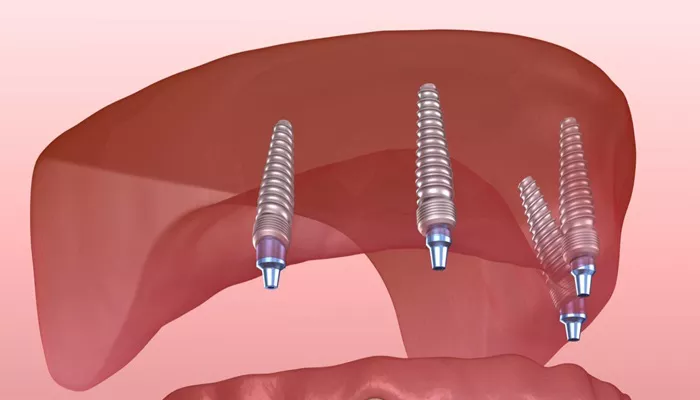Dental implants have revolutionized the field of dentistry, offering a long-lasting and aesthetically pleasing solution for missing teeth. With advancements in technology and materials, dental implants have become more reliable and safer.
However, choosing the safest type of implant is crucial for ensuring the best outcomes. This article explores the different types of dental implants, their safety profiles, and what makes one type safer than the others.
Understanding Dental Implants
Dental implants are artificial tooth roots, usually made from titanium, that provide a strong foundation for fixed or removable replacement teeth. The process involves surgically placing the implant into the jawbone, where it fuses with the bone through a process called osseointegration. This integration is key to the stability and longevity of the implant.
Types of Dental Implants
1. Endosteal Implants
2. Subperiosteal Implants
3. Zygomatic Implants
SEE ALSO: Can You Get Dental Implants after Tooth Extraction?
Endosteal Implants: The Gold Standard
Endosteal implants are the most commonly used type of dental implant. They are placed directly into the jawbone and can hold one or more artificial teeth. These implants come in various shapes, including screw, cylinder, and blade forms.
Why Endosteal Implants are Considered Safe
Osseointegration: Endosteal implants benefit from excellent osseointegration, leading to high stability and strength.
Material: Made from biocompatible materials like titanium and zirconia, endosteal implants have a low risk of rejection and allergic reactions.
Long-term Success: Studies have shown that endosteal implants have a high success rate, with proper care and maintenance leading to a lifespan of over 20 years.
Versatility: They can be used in various clinical situations, making them suitable for most patients.
Subperiosteal Implants: A Less Common Choice
Subperiosteal implants are placed under the gum but above the jawbone. They are typically used for patients who do not have enough healthy jawbone for endosteal implants and cannot undergo bone augmentation procedures.
Safety Concerns with Subperiosteal Implants
Stability: Since subperiosteal implants do not integrate with the jawbone, they might not offer the same level of stability as endosteal implants.
Infection Risk: The placement of subperiosteal implants can lead to a higher risk of infection and peri-implantitis (inflammation around the implant).
Limited Use: They are generally considered only when other options are not feasible, which limits their applicability.
Zygomatic Implants: A Specialized Solution
Zygomatic implants are used in cases where the upper jawbone is severely resorbed and cannot support traditional implants. These implants anchor in the zygomatic bone (cheekbone) rather than the maxilla (upper jawbone).
Safety and Efficacy of Zygomatic Implants
Alternative for Severe Bone Loss: They provide a solution for patients with significant bone loss who cannot undergo bone grafting.
Complex Surgery: The procedure is more complex and requires specialized surgical skills, which can increase the risk of complications.
Long-term Data: While early results are promising, long-term studies are still needed to fully understand the success and safety profile of zygomatic implants.
Material Considerations: Titanium vs. Zirconia
Titanium Implants
Titanium is the most commonly used material for dental implants due to its excellent biocompatibility and strength.
Advantages of Titanium
Biocompatibility: Titanium is well-tolerated by the body and integrates effectively with bone.
Durability: Titanium implants are extremely durable and can withstand the forces of chewing and biting.
Proven Track Record: Titanium implants have been used for decades with a high success rate.
Zirconia Implants
Zirconia is a newer material used for dental implants. It is a ceramic that offers a metal-free alternative for patients with metal sensitivities or allergies.
Factors Influencing the Safety of Implants
1. Patient Health
2. Surgical Technique
3. Post-Operative Care
Patient Health: A Crucial Determinant
The overall health of the patient plays a significant role in the success and safety of dental implants. Conditions such as uncontrolled diabetes, smoking, and poor oral hygiene can affect healing and increase the risk of complications.
Surgical Technique: The Importance of Expertise
The skill and experience of the dental surgeon are critical factors in the safety of implant placement. Proper planning, precise execution, and the use of advanced techniques can minimize risks and enhance outcomes.
Post-Operative Care: Ensuring Longevity and Safety
Proper post-operative care, including maintaining good oral hygiene and regular dental check-ups, is essential for the long-term success and safety of dental implants. Patients should follow their dentist’s recommendations to avoid complications such as infection and peri-implantitis.
Conclusion
In conclusion, endosteal implants are considered the safest type of dental implant due to their high success rate, excellent osseointegration, and the use of biocompatible materials like titanium and zirconia. While other types of implants, such as subperiosteal and zygomatic implants, have their specific uses and advantages, they come with higher risks and are generally reserved for cases where endosteal implants are not feasible.
Ultimately, the safest implant type for a patient depends on their individual health, bone structure, and specific dental needs. Consulting with an experienced dental professional is crucial for determining the best and safest implant option for each patient.

